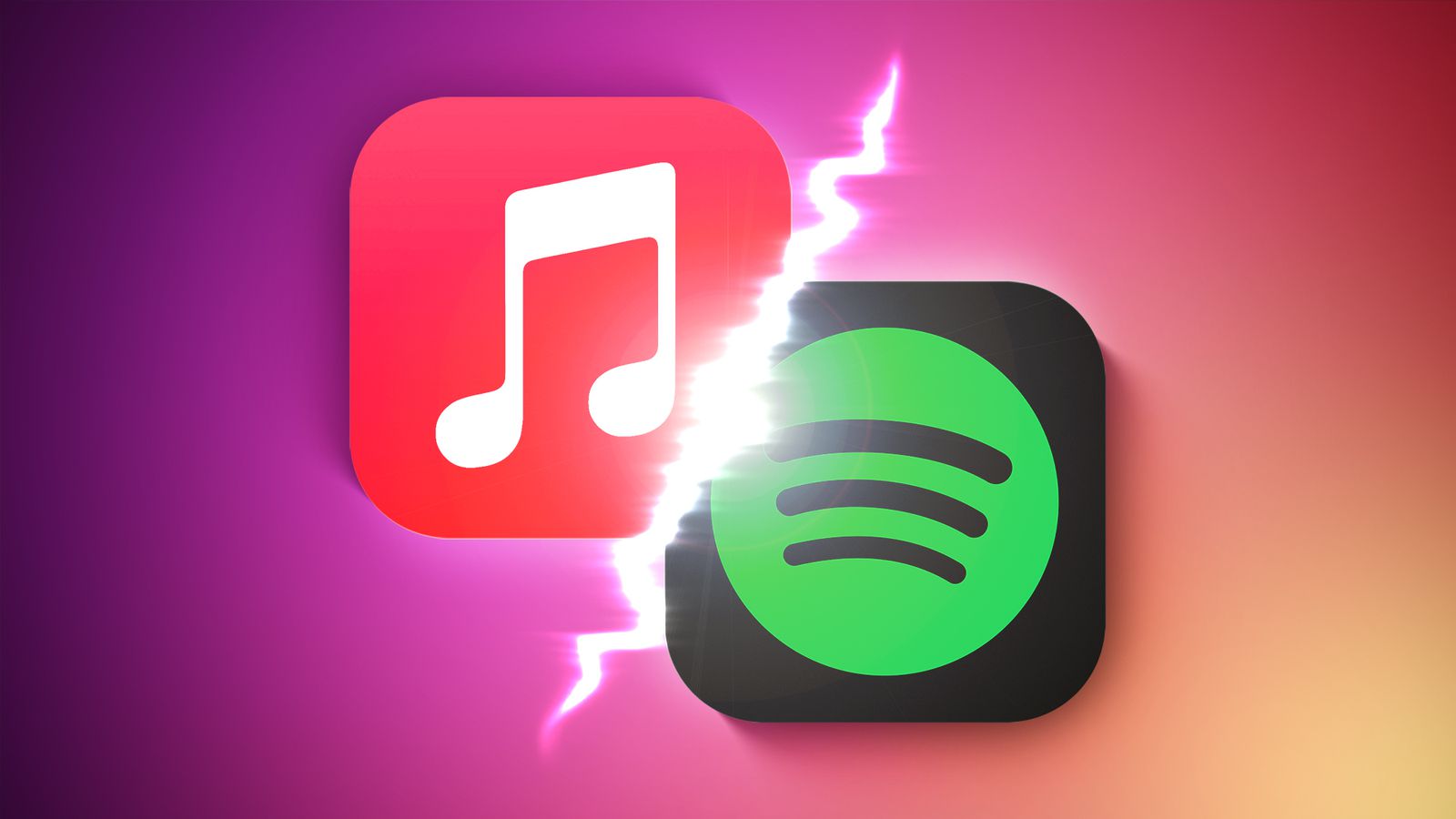In 2024, the competition between Apple Music and Spotify remains as intense as ever, with both platforms offering a wide array of features and services to music lovers around the globe. As streaming continues to be the preferred way to consume music, deciding between Apple Music and Spotify can be challenging. Each platform has its strengths and unique offerings, and the best choice often depends on your specific needs and preferences. In this detailed comparison, we’ll explore the key aspects of both services to help you determine which one is more worth using in 2024.
1. Music Library and Content
One of the most critical factors in choosing a streaming service is the size and quality of its music library. Here’s how Apple Music and Spotify stack up:
Apple Music: Apple Music boasts an extensive catalog of over 100 million songs. This vast library includes not only mainstream hits but also a wide variety of genres, from classical to indie. Apple Music is also known for its exclusive releases, where artists often debut their new albums or singles on the platform before they are available elsewhere.
Spotify: Spotify also offers an impressive library, with over 100 million tracks available. While its catalog is similar in size to Apple Music’s, Spotify tends to excel in playlist curation and personalized content. Spotify’s playlists, such as “Discover Weekly” and “Release Radar,” are algorithmically generated and tailored to your listening habits, making music discovery one of its standout features.
In terms of sheer numbers, both platforms are on equal footing. However, if exclusive content and early access to new music are essential to you, Apple Music might have a slight edge.
2. User Interface and Experience
The user interface (UI) plays a significant role in how enjoyable and seamless the listening experience is:
Apple Music: Apple Music’s interface is sleek, minimalist, and integrates seamlessly with Apple’s ecosystem. The app is especially intuitive for iOS users, with smooth navigation and easy access to playlists, albums, and radio. Apple Music also includes a “For You” section that curates playlists and recommendations based on your listening history, though some users find these recommendations less accurate compared to Spotify’s.
Spotify: Spotify’s interface is designed with user engagement in mind. The platform emphasizes easy discovery through its home screen, which is filled with personalized playlists, new releases, and podcasts. Spotify’s UI is consistent across devices and operating systems, making it equally user-friendly for Android and iOS users. The app also offers a dark mode, which many users find visually appealing and easier on the eyes.
For users who prioritize a highly personalized and discovery-oriented experience, Spotify’s interface might be more appealing. However, those deeply embedded in the Apple ecosystem might prefer the integrated experience of Apple Music.
3. Audio Quality
For audiophiles, sound quality is a critical consideration when choosing a streaming service:
Apple Music: Apple Music offers high-resolution audio with the introduction of lossless streaming and spatial audio support with Dolby Atmos. These features provide a richer and more immersive listening experience, especially when using high-quality headphones or speakers. Apple Music’s lossless streaming supports up to 24-bit/192kHz, which is ideal for users who want the best possible audio quality.
Spotify: Spotify currently streams at a maximum of 320kbps for its Premium users, which is sufficient for most listeners. However, Spotify has announced plans to roll out a high-fidelity (HiFi) streaming option, though this feature has been delayed and is expected to launch sometime in 2024. Until then, Apple Music holds the advantage for listeners who prioritize superior audio quality.
If audio quality is a top priority for you, Apple Music’s lossless and spatial audio features make it the better choice as of now. However, Spotify’s upcoming HiFi tier may level the playing field.
4. Pricing and Subscription Plans
Cost is always a significant factor when choosing a streaming service. Here’s how Apple Music and Spotify compare in terms of pricing:
Apple Music: Apple Music offers a single-user subscription at $10.99 per month. There’s also a Family Plan for $16.99 per month, which allows up to six members to share the account, and a Student Plan at $5.99 per month. Additionally, Apple Music offers a Voice Plan at $4.99 per month, which is a more affordable option for users who prefer using Siri to control their music. Apple Music also provides a free trial for new users, typically lasting one month.
Spotify: Spotify’s Premium plan is similarly priced at $10.99 per month for individual users. The Family Plan costs $16.99 per month and also supports up to six users. Spotify offers a Duo Plan at $13.99 per month for two users living at the same address and a Student Plan at $5.99 per month. One of Spotify’s significant advantages is its free tier, which allows users to access the service with ads and some limitations on functionality.
Spotify’s free tier is an excellent option for users who want to enjoy music streaming without paying a subscription, though the experience is less premium compared to paid plans. If you’re looking for flexibility and a range of subscription options, Spotify might offer more value.
5. Integration and Ecosystem
How well a music service integrates with your other devices can greatly influence your choice:
Apple Music: Apple Music is deeply integrated into the Apple ecosystem. If you use an iPhone, iPad, Mac, or Apple Watch, Apple Music is the obvious choice due to its seamless integration. The service also supports Siri voice commands, allowing you to control your music with ease. Additionally, Apple Music works well with the HomePod and HomePod Mini, providing a complete and connected experience across all Apple devices.
Spotify: Spotify, while not tied to a specific hardware ecosystem, offers excellent cross-platform support. It works smoothly on a wide variety of devices, including smartphones, tablets, PCs, smart speakers, and even gaming consoles. Spotify Connect allows you to control playback on different devices from your smartphone, which is a convenient feature for users with a diverse range of tech. Spotify also integrates with numerous third-party services, making it highly versatile.
If you’re already invested in the Apple ecosystem, Apple Music offers the most integrated experience. However, Spotify’s flexibility across various platforms makes it a strong contender for users who value cross-device compatibility.
6. Podcasts and Additional Content
In recent years, podcasts have become a significant part of the streaming landscape:
Apple Music: Apple Music does not offer podcasts within its platform. Instead, Apple provides a separate app, Apple Podcasts, for users who want to listen to podcasts. While this allows for a dedicated podcast experience, it may not be as convenient for users who prefer to have all their audio content in one place.
Spotify: Spotify has heavily invested in podcasts, making them an integral part of the platform. Spotify offers a vast library of podcasts, including exclusive content and original shows. The integration of music and podcasts in one app provides a seamless experience for users who consume both types of content regularly. Spotify’s acquisition of podcast companies like Anchor and Gimlet Media has further bolstered its podcast offerings.
For users who enjoy podcasts alongside their music, Spotify is the clear winner, offering a more comprehensive and integrated experience.
7. Social Features
Music is often a social experience, and both platforms offer features to connect with friends and share music:
Apple Music: Apple Music allows users to follow friends, share playlists, and see what others are listening to. However, its social features are relatively basic compared to Spotify. The focus is more on curation and personalization rather than social interaction.
Spotify: Spotify excels in social features. It allows users to follow friends, see their listening activity in real-time, and collaborate on playlists. Spotify also integrates with social media platforms like Instagram, enabling users to share what they’re listening to directly to their stories. The “Group Session” feature is another standout, allowing multiple users to control the same playlist in real-time, perfect for parties or group listening.
If sharing music and connecting with friends is essential to you, Spotify offers a richer social experience.
8. Your Own Experience
In 2024, both Apple Music and Spotify remain top-tier music streaming services, each with its unique strengths. Apple Music is ideal for those who value high-resolution audio, are deeply embedded in the Apple ecosystem, and prefer exclusive content. On the other hand, Spotify shines with its superior music discovery features, extensive podcast library, and social functionalities, making it a fantastic choice for users who value flexibility and a more integrated audio experience.
Ultimately, the decision between Apple Music and Spotify comes down to your priorities. If audio quality and ecosystem integration are crucial, Apple Music is the way to go. However, if you want a more versatile, socially-driven platform with a blend of music and podcasts, Spotify remains the better choice. Both platforms offer free trials or free tiers, so it’s worth experimenting with each to see which one resonates more with your personal preferences.






